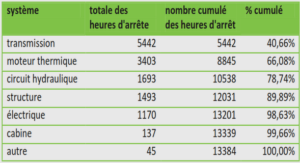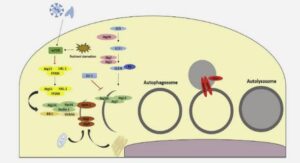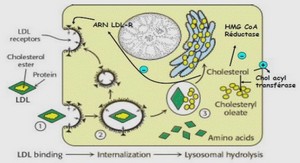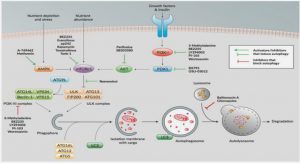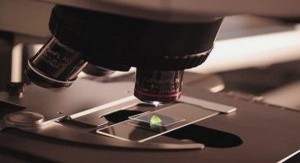NPC Natural Product Communications
Madagascar is one of the lands where traditional medicine based on the use of plants has an important place in society. Several plants in the Malagasy flora are alleged to possess therapeutic virtues and are largely used by the local population. Many of these plants are used without pharmacological or phytochemical data or clinical evaluation. Our studies lead us to investigate plants used for the treatment of hypertension. Among these, Spirospermum penduliflorum (Menispermaceae) is mentioned to be effective against arterial hypertension. The aim of the present study was to verify the traditional use of the plant and to determine the nature of the bioactive compounds by a bio-guided fractionation approach combining chromatographic methods with vasorelaxant activity tests. When tested on phenylephrine-contracted aorta (Figure 1), the nhexane, dichloromethane (DCM) and methanol (MeOH) extracts showed significant vasorelaxant activity characterized by log IC50 (µg/mL) values of 1.4 ± 0.02, < -0.5 and 0.29 ± 0.01, respectively (respective IC50 values were 25 µg/mL, < 0.3 µg/mL and 1.9 µg/mL). Isoprenaline, used as a reference standard, exhibited vasorelaxant activity with an IC50 of 1.7 µg/mL. Fractionation of the dichloromethane extract was then undertaken by preparative TLC giving 4 fractions named RR, RR1, RR2 and RR3. Each fraction was tested at 1 µg/mL for its vasorelaxant activity on rat aorta contracted by phenylephrine (Table 1). RR1 showed the highest vasorelaxant activity, which was further investigated. Figure 1: Relaxing effect of different extracts of Spirospermum penduliflorum leaves in rat aorta contracted by phenylephrine (1 µM). (n = 6). Table 1: Vasorelaxing activities of the four fractions of the DCM extract on phenylpephrine-induced contraction of rat aorta at 1µg/mL. Fractions RR RR1 RR2 RR3 Relaxation (%) (n = 4) 12.5 ± 0.09 100 ± 8.50 7.2 ± 0.6 37.5 ± 0.4 The relaxation of phenylephrine-induced contraction by RR1 was tested in rat aorta with (E+) and without endothelium (E-). Figure 2A shows that the activity of RR1 was not significantly different in either the presence or absence of functional endothelium: the log IC50 values (µg/mL) were -0.74 ± 0.03 and – 0.61 ± 0.02 in the presence and absence of endothelium, respectively (IC50 values were 0.18 and 0.24 µg/mL) (p > 0.05, n = 6). To determine the potential role of β-adrenergic receptors in the vasorelaxant effect of RR1, aorta rings were pre-incubated with propranolol (1 µM) before the contractile response to phenylephrine. The potential involvement of voltage-dependent Ca2+ channels (VDCs) in the relaxing activity of RR1 was tested by measuring the effect of RR1 on KCl-induced contraction. When KCl (100 mM) was used to evoke the contraction of the aorta, RR1 produced a concentration-dependent relaxation. However, RR1 was less potent in inhibiting KCl-contraction than phenylephrine-contraction (Figure 2B). The IC50 value for KCl-contraction was higher than 30 µg/mL (n = 6). The developed TLC chromatogram of RR1 showed two well separated spots at Rf 0.62 and 0.81, which gave positive reactions with Dragendorff’s reagent. Fractionation by successive open column chromatography, followed by purification on preparative TLC led to the isolation of two active compounds, 1 and 2. Comparison of our spectroscopic and mass spectrometric data with those in the literature, and with a reference sample, led us to the identification of compound 1 as dicentrine [1,2], and compound 2 as neolitsine [2]
Experimental Plant material
Fresh leaves of Spirospermum penduliflorum were collected from the east coast of Madagascar. Botanical identification was made by the botanist Benja Rakotonirina. A voucher specimen was deposited at the herbarium of IMRA (n° AML13). Chemical compounds: The following reagents were purchased from Sigma (St Louis, MO): isoprenaline, acetylcholine, D-glucose, phenylephrine, propranolol, prazosin, dimethylsulfoxyde and Nnitro-L-arginine. L-Dicentrine was purchased from Sequoia Research Products (Pangbourne, UK). Methanol, ethylacetate, and dichloromethane were purchased from Scharlab (Barcelona, Spain). All the salts (KCl, NaCl, NaHCO3, MgCl2, and CaCl2) were purchased from Prolabo (VWR international, Haasrode, Belgium). Extraction: The plant material used was in the form of finely ground, dried leaves. Extraction was performed by successive maceration of the plant material (750 g) in increasing polarity solvents, namely n-hexane, dichloromethane, and methanol (2.5 L of each). The extracts were filtered and dried under reduced pressure. Rat aorta: Wistar rats of either sex weighing between 200 to 300 g were used in the study. Animals were sacrificed, the thoracic aorta isolated and cut into rings of 2 mm in length. The rings were mounted under a tension of 2g in organ baths containing Krebs solution (NaCl 122 mM, KCl 5.9 mM, NaHCO3 15 mM, MgCl2 1.25 mM, CaCl2 1.25 mM, and glucose 11 mM). When required, the endothelium was removed from the rat aorta rings by gently rubbing the luminal surface with a cotton rod before mounting the aorta ring in the organ bath. The bath solution was maintained at 37°C and gassed with 95% O2 and 5% CO2. Aorta were equilibrated in the medium for 2 h and the bath solution was changed every 30 min. After 1 h of equilibration, the tension was adjusted to 2 g. Contractions and relaxations were recorded with an Ugobasile 7003 isometric force transducer. All experiments were performed in accordance with international guidelines and the local ethics committee. Pharmacological experiments Relaxing activity on the contraction induced by phenylephrine: The relaxing activity was tested on phenylephrine pre-contracted aorta either in the absence or presence of endothelium. In both cases, after the equilibration, phenylephrine (1 µM) was added to the organ bath (20 mL) to induce contraction. At the steady-state contraction, acetylcholine (1 µM) was injected into the bath solution to relax the aorta in order to verify the presence of endothelium and its integrity. After 60 min of recuperation time, the artery rings were stimulated with phenylephrine (1 µM) and cumulative concentrations of the extracts (from 0.3 to 50 µg/mL), from a stock solution in DMSO/H2O (10:90: v/v) were added into the organ bath (20 mL) at the steady-state of contraction to evaluate the vasorelaxant activity. When required, aorta rings were incubated in the presence of propranolol (1 µM) for 30 min before inducing the contraction with phenylephrine. Relaxing activity on KCl induced contractions: After 2 h equilibration with Krebs solution, the medium was removed and replaced with depolarizing solution containing: NaCl 27 mM, KCl 100 mM, NaHCO3 15 mM, MgCl2 1.25 mM, CaCl2 1.25 mM, and glucose 11 mM to induce contraction. After contraction had reached a maximum, the organ was rinsed 3 times with normal Krebs solution. After 30 min equilibration, the medium was replaced by depolarizing Krebs solution. Cumulative concentrations of the extracts (from 0.03 to 10 µg/mL) from a stock solution in DMSO/H2O (10:90, v/v) were added to the organ bath (20 mL) at the steady state of contraction. Phenylephrine concentration-response curves: Concentrationresponse curves of phenylephrine (from 10-9 M to 3×10-5 M) were realized in endothelium-denuded aorta rings either without or in the presence of different concentrations of dicentrine (0.1 µM and 1 µM from stock solution in DMSO/H2O (10:90, v/v)). Contraction was expressed as percent of the maximum response obtained in the absence of inhibitor in the same artery ring. The concentrationeffect curves were built and the concentrations of phenylephrine producing 50% of the maximum aorta contraction (EC50) were calculated and compared. Chromatographic methods: TLC was realized on silica gel 60F254 plates (Merck) using n-hexane/ethyl acetate/ethanol/NH4OH (6/6/2.5/0.01) as mobile phase. The separated components were visualized under visible and ultraviolet light (254 and 365 nm) or using Dragendorff’s spray reagent. Fractionation was made by successive open CC using either silica gel 60 (0.063 – 0.200 mm, Merck Darmstadt, Germany) as stationary phase or Sephadex Gel LH-20 (Pharmacia Biotech Healthcare, Diegem, Belgium) using as eluant a mixture of dichlomethane-methanol (1:1, v/v). Final purification was achieved by preparative TLC on Silica Gel 60 GF254 plates (Merck Darmstadt, Germany). The mobile phase was a mixture of ethyl acetate/methanol (9:1). Identification method: Identification of the isolated compounds was performed with a LCQ Advantage Thermo Finnigan (Waltham, MA, USA) mass spectrometer piloted by X-Calibur software. Mass spectra were determined using an APCI source in positive mode, a vaporizer temperature of 455°C, a sheath gas flow rate of 45 (a.u.) and a capillary voltage of 2V. 13C and 1 H NMR spectra were recorded on a Bruker Avance DRX-400 spectrometer in CDCl3, CD3OD or DMSO at 400 MHz (1 H) and 100 MHz (13C), at 30°C. A combination of COSY, HMQC, HMBC and ROESY experiments were used when necessary for the assignment of 1 H and 13C chemical shifts.

